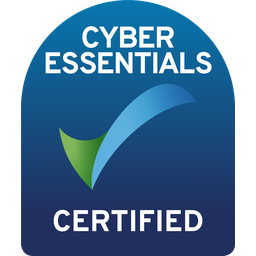

Understanding the ESAs’ Updates
What is DORA, and Why Do These Registers Matter?

How to Prepare Effectively
Conduct a Gap Analysis:
- Review existing records and assess whether they meet DORA’s requirements. Identify gaps in information, particularly concerning critical ICT providers.
Leverage Outputs from the 2024 Dry Run:
- Use the learnings from the ESAs’ dry run exercise to refine your approach. Pay particular attention to any challenges highlighted in the reporting process.
Develop Robust Processes:
- Establish clear workflows for maintaining and updating the registers. Assign responsibilities across departments to ensure consistent data management.
Engage with ICT Providers:
- Proactively communicate with your ICT third-party providers to gather required information. Build clauses into contracts to ensure ongoing compliance with DORA’s expectations.
Invest in Technology Solutions:
- Consider implementing dedicated tools or platforms to automate the maintenance of these registers, ensuring they remain accurate and compliant with DORA.
Train Key Stakeholders:
- Educate senior management and relevant teams on the importance of these registers, their role in compliance, and how to contribute to their upkeep.
Key Updates from the ESAs
The ESAs' updated dedicated page brings together the following resources to assist financial entities in preparing for DORA’s requirements:
Applicable Policy Framework:
- This includes regulatory guidance on how to structure and maintain these registers in alignment with DORA’s provisions. It sets clear expectations for the types of information entities must include, such as:
- Details of contractual arrangements.
- Identification of critical ICT third-party providers.
- Risk assessments and performance monitoring data.
- This includes regulatory guidance on how to structure and maintain these registers in alignment with DORA’s provisions. It sets clear expectations for the types of information entities must include, such as:
Supporting Materials:
- Outputs from the 2024 Dry Run Exercise, which simulated the reporting process for registers, are now available. These materials provide practical insights into common challenges, best practices, and how to address gaps in preparation.
- Outputs from the 2024 Dry Run Exercise, which simulated the reporting process for registers, are now available. These materials provide practical insights into common challenges, best practices, and how to address gaps in preparation.
Implementation Timeline:
- Financial entities must ensure their registers are complete and ready for reporting by April 2025, when this requirement comes into force.
- Financial entities must ensure their registers are complete and ready for reporting by April 2025, when this requirement comes into force.
What Does This Mean for Financial Entities?
To comply with DORA, financial entities must go beyond compiling basic data on ICT third-party providers. The registers must be dynamic, reflecting the evolving risk landscape and meeting the following criteria:
- Accuracy: Ensure all contractual arrangements are up-to-date and correctly documented.
- Granularity: Include detailed information on ICT providers, particularly those deemed critical to operational continuity.
- Integration: Align the registers with broader ICT risk management frameworks, ensuring they are not standalone records but part of a cohesive resilience strategy.
- Accessibility: Maintain the registers in a format that is easily accessible for audits and supervisory reporting.
Failure to meet these requirements could result in significant penalties under DORA, including reputational damage and financial consequences.
Looking Ahead
The ESAs’ dedicated page provides an invaluable resource for financial entities navigating the complexities of DORA compliance. By acting on the available guidance and leveraging insights from the dry run exercise, organisations can position themselves to meet the April 2025 deadline with confidence.
Ensuring that your Registers of ICT Third-Party Service Providers are compliant is not just a regulatory obligation but a strategic imperative to safeguard operational resilience in today’s interconnected financial ecosystem. For those who need further clarity or support, I recommend visiting the ESAs’ dedicated page here.
Conclusion
DORA’s emphasis on ICT third-party risk reflects the growing importance of securing the financial sector against technological vulnerabilities. By dedicating the necessary resources, leveraging available guidance, and embedding compliance into your organisation's culture, you can turn this regulatory challenge into an opportunity for long-term resilience and operational excellence.
For further discussions or bespoke advice, feel free to reach out or comment below. Let’s navigate the path to DORA compliance together!
Author: Paul C Dwyer

HEAD OFFICE
-
ICTTF Ltd
Unit 8, Kinsealy Business Park,
Kinsealy Lane,
Malahide,
Co Dublin
K36 CX92 -
info@icttf.org
support@icttf.org -
+353 (0)1 905 3263


